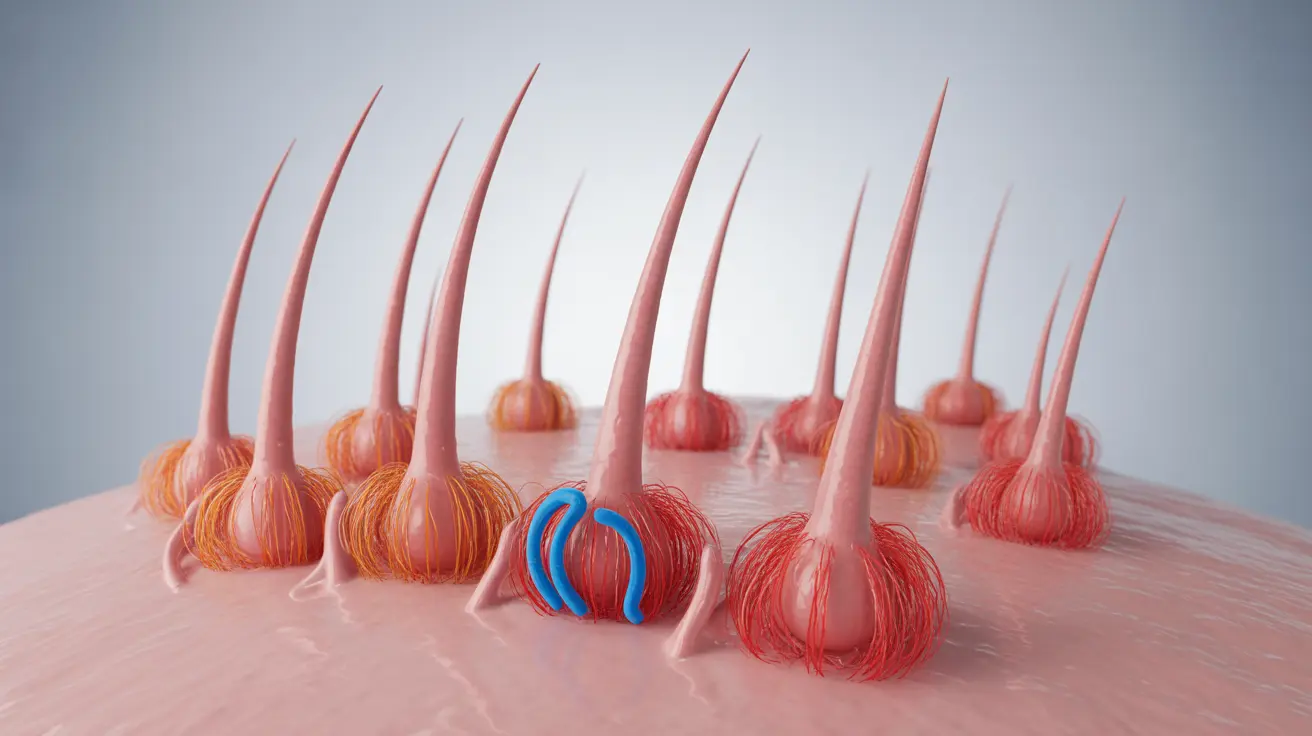For men experiencing male pattern baldness, Propecia (finasteride) represents a significant advancement in hair loss treatment. This FDA-approved medication has helped millions of men address their hair loss concerns through a scientifically proven approach to blocking DHT, the hormone primarily responsible for male pattern hair loss.
Understanding how Propecia works, its benefits, and potential side effects is crucial for men considering this treatment option. This comprehensive guide will explore everything you need to know about using Propecia for male pattern hair loss.
How Propecia Works
Propecia's active ingredient, finasteride, works by inhibiting the enzyme 5-alpha reductase, which converts testosterone into dihydrotestosterone (DHT). By reducing DHT levels in the scalp, Propecia helps prevent further hair loss and can promote new hair growth in many cases.
The medication specifically targets the underlying cause of male pattern baldness, making it an effective treatment option for many men experiencing hereditary hair loss, particularly in the crown and middle of the scalp.
Expected Results and Timeline
When starting Propecia, it's important to understand that results don't appear overnight. Most men need to take the medication consistently for several months before noticing significant improvements. The typical timeline includes:
- Reduced hair loss within 3-6 months
- Visible new hair growth within 6-12 months
- Maximum benefits typically seen after 1-2 years of consistent use
Individual results can vary, and continued use is necessary to maintain any improvements achieved through treatment.
Understanding Side Effects
While Propecia is generally well-tolerated, men should be aware of potential side effects before starting treatment. Common side effects may include:
- Decreased libido
- Erectile dysfunction
- Ejaculation disorders
- Breast tenderness or enlargement
- Testicular pain
It's important to note that while sexual side effects occur in a small percentage of men, they can be concerning when they do occur. Open communication with your healthcare provider about any side effects is essential.
Long-term Safety and Usage
Propecia has been extensively studied for long-term use in men. While many men safely take the medication for years, regular monitoring by a healthcare provider is recommended. Important safety considerations include:
- Annual check-ups to monitor progress and side effects
- PSA testing adjustments for prostate cancer screening
- Avoiding medication handling by pregnant women or those who may become pregnant
- Maintaining consistent daily dosing for optimal results
Frequently Asked Questions
How does Propecia (finasteride) work to treat male pattern hair loss in men?
Propecia works by blocking the conversion of testosterone to DHT, the hormone responsible for male pattern hair loss. This reduction in DHT levels helps protect hair follicles from shrinking and allows for potential regrowth of existing hair.
What are the common side effects men should expect when taking Propecia for hair loss?
The most common side effects include decreased sexual desire, difficulty getting or maintaining an erection, and reduced semen volume. These effects occur in a small percentage of men, typically less than 2% of users.
Can sexual side effects from Propecia continue even after stopping the medication?
In some cases, sexual side effects may persist after discontinuing Propecia. While this is rare, it's important to discuss this possibility with your healthcare provider and report any continuing side effects promptly.
How long does it take to see results from taking Propecia for hair thinning or balding?
Most men begin to see a reduction in hair loss within 3-6 months of starting Propecia. Noticeable hair regrowth typically occurs within 6-12 months of consistent use. Maximum benefits are usually achieved after 1-2 years of treatment.
Is Propecia safe for men to use long term, and what precautions should be taken during treatment?
Propecia is generally safe for long-term use in men, but regular medical monitoring is recommended. Key precautions include regular check-ups, proper medication handling, and awareness of potential side effects. Men should also inform their doctors about Propecia use before PSA testing for prostate cancer screening.
Remember to consult with a healthcare provider before starting Propecia to ensure it's the right choice for your specific situation and to discuss any potential risks or concerns.




